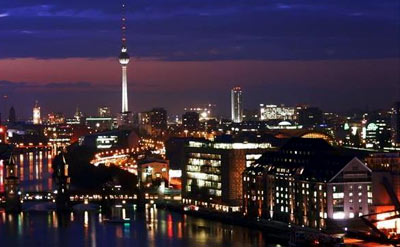The German option

Every year, hoards of Nepali students are found jetting off to foreign countries for education and work. While the US and Australia are probably the most popular destinations at present, we should keep our minds open to other possible alternatives. Germany, for instance, is a viable option, and the number of students applying to this European nation has grown over time, as demonstrated by the proliferation of consultancies in Kathmandu that help students to get into German educational institutions.
One of the most unique aspects of the education system in Germany is the fact that courses are free. Yes, that’s right, free. While tuition fees in colleges in the US and other countries can often be mindboggling, German universities provide courses free of cost, owing to the fact that these universities are state-funded. Students need only bear their living expenses—the rest is taken care of. Of course, there are some universities that do charge certain fees per semester, but this is limited to a couple of hundred Euros, nothing extravagant. Besides, considering students are allowed to work 90 days a year means that they have ample opportunity to earn some extra cash while they study.
It’s a fact that German universities—of which there are more than 380—are internationally renowned, made famous by their association with scholars such as Humboldt, Einstein, Hegel and Marx. What’s more, they have now introduced Bachelor and Masters degree programs adapted to international standards and credit systems, thereby reducing the entry barriers for international students.
As for post-graduation job opportunities, many of my own acquaintances have found employment following the end of their academic pursuits. It helps that there is often close cooperation between the universities and industries, as well as research organisations, a link that helps students gain insight into the world they will one day be working in. International students are generally given an additional year after their graduation to stay in the country, during which they need to be gainfully employed. This will also greatly boost their chances of getting a permanent residence permit in the future.
International students coming to Germany are usually put off by the fact that they have to learn the language, but for me, it was more of an added bonus rather than an obstacle. I got to learn a language, and honestly, it’s not that difficult, particularly if you’re a fluent English speaker. In practice, it takes about six months to one year to learn the language to the point where you are able to keep up with your university course. There are some German universities that have begun international courses in Management, Engineering and Social Science in English but besides theses, most faculties are run in German.
Besides the academic opportunities, which I found to be plentiful, Germany was overall a lovely place to live in. With well-developed infrastructure, beautiful cities, and a level of perceived safety—at least where I was living—makes it a place I relive fondly in my memories.
Instead of the predictable circuit of countries, Nepali students need to broaden their horizons. Just because it might be intimidating to have to learn a new language doesn’t mean that places like Germany are impossible to live in, it just makes the experience more rewarding. For me, the ten years I spent there was probably the most intellectually-stimulating length of time I’ve ever had the fortune of passing anywhere, and would sincerely recommend Germany to anyone considering going abroad for their studies.
source: Gajurel, Ajita(2011),"The German option", The Kathmandu Post, 3 Dec 2011
Gajurel works in a private bank in Nepal
Posted on: 2011-12-04































